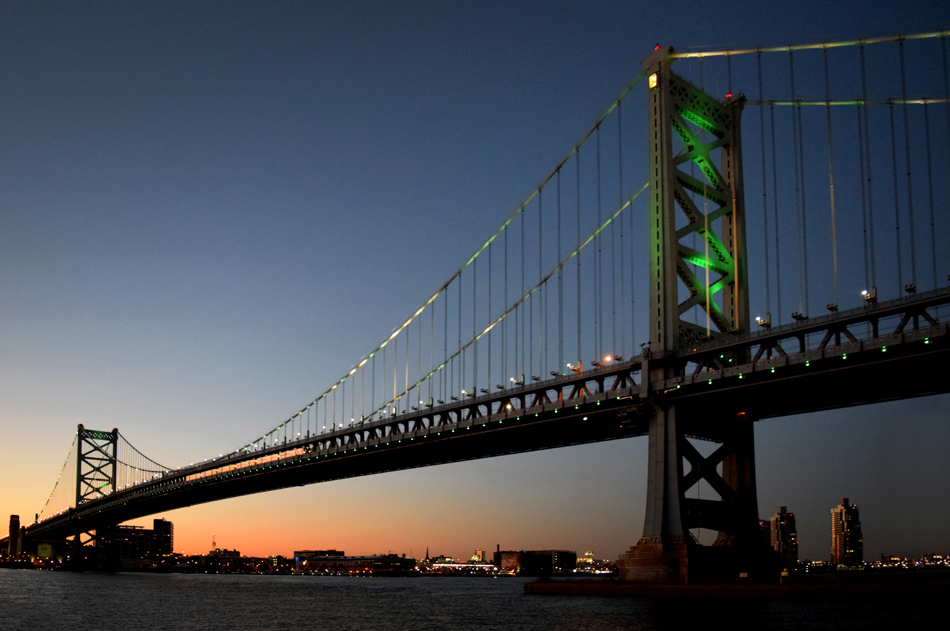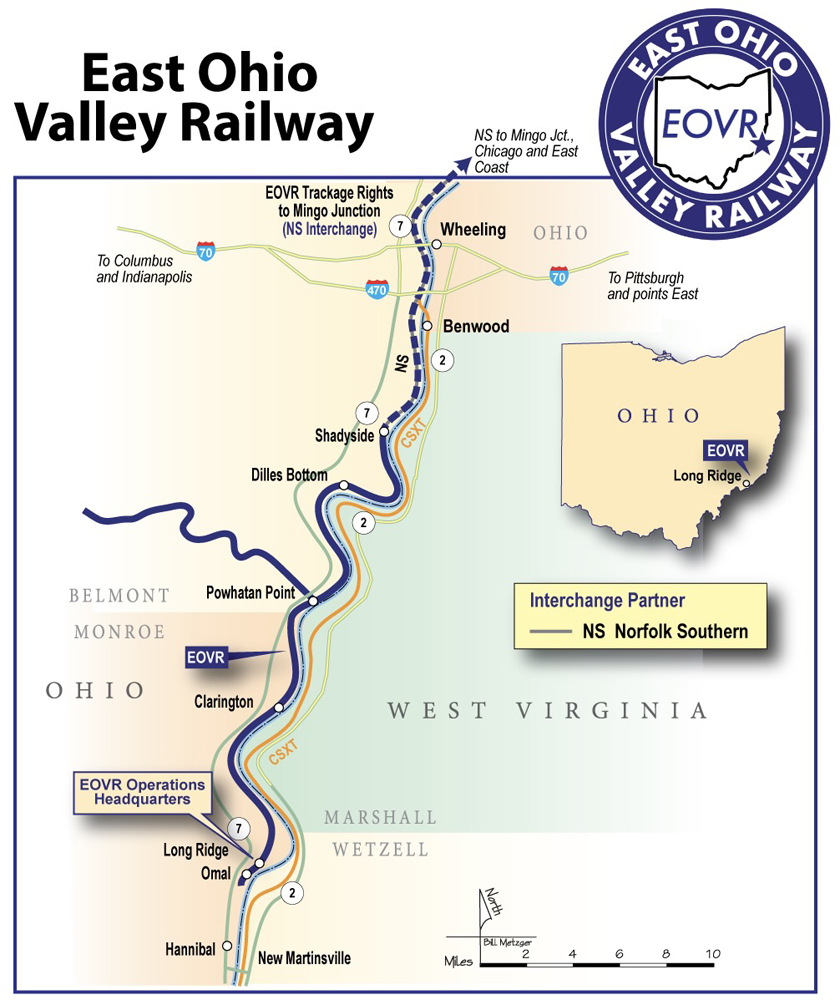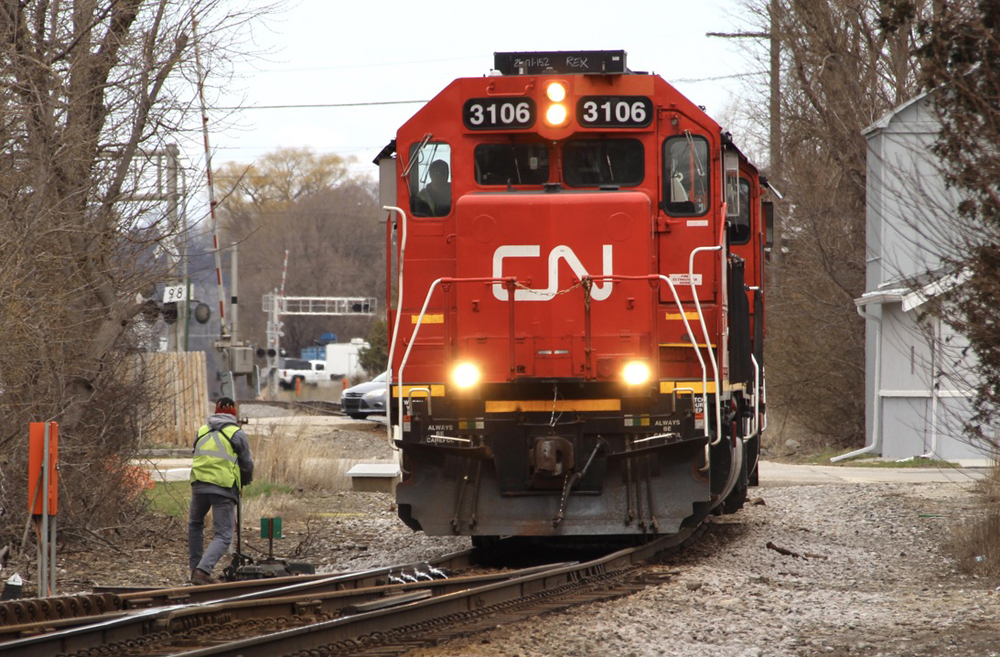
PHILADELPHIA — The two construction workers killed last week when struck by a PATCO train on the Ben Franklin bridge were walking on a track that was supposed to have been shut down while concrete work was in progress, the Philadelphia Inquirer reports.
The two were killed the night of Oct. 14 while working on the bridge that connects Philadelphia and Camden, N.J. [see “Two workers killed …,” Trains News Wire, Oct. 15, 2022]. They were identified as Victor Martins, 55, and Donato Fiocca, 53, by their union, Cement Mason’s and Plasterers’ Union Local No. 592.
National Transportation Safety Board spokeswoman Jennifer Gabis said in an emailed statement to the Inquirer that the men there was a planned outage of Track 2 on the bridge, but that “preliminary information indicates that at the time of the accident, Track 2 had not been taken out of service when the contractors entered the bridge in a close cdearance area.”
The NTSB, U.S. Occupational Safety and Health Administration, and Delaware River Port Authority are investigating the accident. The DRPA runs the bridge and PATCO (the Port Authority Transit Corp.), which operates the rail line between Philadelphia and Lindenwold, N.J.














“The DRPA runs the bridge and PATCO (the Port Authority Transit Corp.), which operates the rail line between Philadelphia and Lindenwold, N.J.”
DRPA owns PATCO.
The PATCO line is Standard Gauge, third rail electrified. The tracks on the Bridge are separated, one on each side of the bridge. Each track is signalled in both directions with cab signals and automatic train stop in both directions, including enforcing full stops. PATCO has schedules already written for single track operation in both directions.
It seems what we’ve got here is failure to communicate.
We need to remember to conduct our own safety assessment of a location when viewing or photographing trains. Years ago, I was shooting a train from a bridge on a country road. As the train ran under the bridge I turned to cross the road to capture it moving away and almost stepped into the path of a car. Fortunately, someone yelled at me to stop. I should have recognised the danger presented by planning an action that involved crossing an active road at a time when I was focused on the photography task.
Here’s another time I almost got killed: Didn’t hear a train that was around a curve with a bridge abutment between the train and us. You can hear trains from miles away but not necessary coming around the bend at you!
Another case in point: I have witnessed: Curved track approach to grade crossing, one can hardly hear horn warning since there is dense foliage to muffle both engine sound AND whistle. I have sat at this crossing and waited, ONLY due to crossarm being down with flashing light. EERIE, no oncoming train evidence, then seemingly outta no where…..here she comes, hi ball. endmrw1121220930
The world is full of brain-dead incidents. The Detroit Fire Department responded to a car crash in the southwest side of town. Parked the fire truck on the track. The fire truck was hit by an Amtrak train.
I’ve narrowly escaped a few myself. Once on a bridge construction job, the noise of the pile driver blocked out the beep-beep-beep of a truck in reverse. How I’m still alive is God’s guess. Another time (early in my career), protected only by safety glasses, inspecting grossly substandard 7200 volt equipment (a high voltage box designed and built by total idiots, and purchased and installed by other total idiots), I opened the secondary-side door to write down the branch circuits. Knowing what I soon learned, I wouldn’t get within fifteen feet of the crummy box if the door were opened by a licensed electrician in full hi-volt PPE.
Most recently (now in retirement and out railfanning), I stepped back from a moving CNR freight train for safety reasons — right into a live lane of a parking lot driveway.
Excellent comment, Mike. As one of the railroaders who has lived a safety first, lesson Number One rule in life. To LIVE in the railroad world, you stay alert for anything Vehicles, Buses, Pulpwood log trucks, gasoline or propane trucks, people parked on the track, games of “chicken” with the train, beat the train over the crossing, pedestrians…and on and on and on, requires safety above all else. Clarification only takes a minute and a mistake takes lives. It’s always worth the extra, but necessary, extra step.
Things happen. This most sadly caused fatals. RR’s are dangerous. As an electrician I should investigate THE “lock out” before proceeding. My habit is to also check for active wires at the problem site before proceeding. That said, these two poor workers and train crew involved could not have seen/known but depended on safety protocols by people not seen. People don’t realize the trauma engine crews suffer after a fatal that they could NOT have prevented. In my example of lockout, should someone have removed the lockout and an accident followed, that person is directly responsible.
To me the most famous and tragic RR grade crossing accident, killed many veterans on a flatbed trailer truck in the midst of a parade. Reason is very simple but yet “one of those things that happen in life”.
There was an accident in Texas that I would be curious to see who was responsible for that fatal. Train was routed onto a siding (or multiple main?) that was occupied by a ribbon rail work crew. Also a more recent “siding” snafu (no fatal) happened and most of the time the reason comes from NTSB/FRA finding that will explain the cause. endmrw1120221110